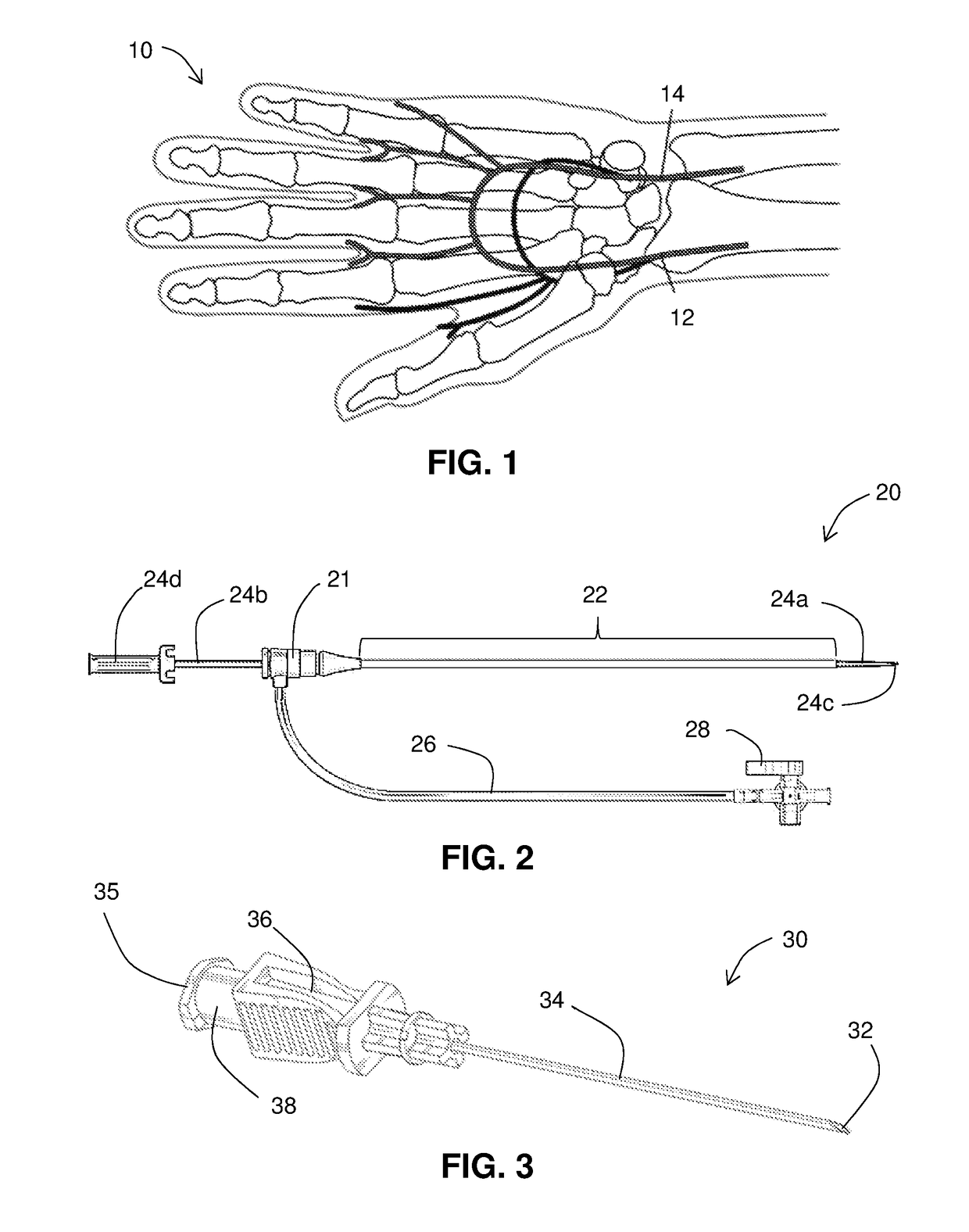Sheath Introducer For Peripheral Artery Catheterization Procedures
a peripheral artery and introducer technology, applied in the field of medical catheterization procedures, can solve the problems of internal bleeding, pain in the chest and shortness of breath, and the risk of catheter placement into a blood vessel is high, and achieves the effect of reducing the risk of internal bleeding, reducing the risk of catheter placement, and improving the safety of us
- Summary
- Abstract
- Description
- Claims
- Application Information
AI Technical Summary
Problems solved by technology
Method used
Image
Examples
Embodiment Construction
[0035]As used herein, “arterial line” refers to a thin catheter inserted into an artery having a diameter of less than about 5 mm. In some embodiments, the arterial line has a diameter of about 2 mm to about 5 mm. The arterial line is typically inserted in the wrist (radial artery); but can also be inserted into the elbow (brachial artery), groin (femoral artery), foot (pedal; dorsalis pedis artery) or the inside of the wrist (ulnar artery) although an artery that is not an end-artery can theoretically be employed. In general, when selecting an artery for use as an entry site for a catheter, it is highly recommended that there is collateral circulation to the area affected by the chosen artery so that peripheral circulation is maintained by another artery even if circulation is disturbed in the cannulated artery.
[0036]“Catheter sheath” or “sheath” or “sheath introducer”, as used herein, means a device which is used to introduce medical devices into a human peripheral artery which co...
PUM
| Property | Measurement | Unit |
|---|---|---|
| diameter | aaaaa | aaaaa |
| diameter | aaaaa | aaaaa |
| length | aaaaa | aaaaa |
Abstract
Description
Claims
Application Information
 Login to view more
Login to view more - R&D Engineer
- R&D Manager
- IP Professional
- Industry Leading Data Capabilities
- Powerful AI technology
- Patent DNA Extraction
Browse by: Latest US Patents, China's latest patents, Technical Efficacy Thesaurus, Application Domain, Technology Topic.
© 2024 PatSnap. All rights reserved.Legal|Privacy policy|Modern Slavery Act Transparency Statement|Sitemap



